Virtual reality’s favorite nostalgia-fueled game-within-a-game is back, this time throwing you into a handful of reimagined Atari 2600 titles from the early ’80s. It’s another solid entry into the series, and as its casual approach to serving up a rash of classic gaming tropes are fairly tried and true at this point. While its first-person RPG focus this time around doesn’t really feel like the sort of substantial evolution that it could be, 1978’s smorgasbord of novelty and undoubtably heartfelt love of classic games does a lot to smooth over many of its rougher spots.
Pixel Ripped 1978 Details:
Available On: SteamVR, Quest, PSVR 2
Release Date: June 15th, 2023
Price: $25
Developer: ARVORE
Publisher: Atari
Reviewed On: Quest 2
Gameplay
Pixel Ripped returns with our digital hero Dot, this time taking us to the dawn of home video game consoles of the late ’70s and early ’80s. You do visit 1978, although you’ll spend a good amount of time in the pre-NES days of the early ’80s too. If you haven’t brushed up on your gaming history, that means stuff like Frogger, Donkey Kong, Pac-Man, Space Invaders, etc. Okay, not those games specifically, but more on that in a bit.
If you’ve played the previous two standalone games, Pixel Ripped 1989 (2018) and Pixel Ripped 1995 (2020), you probably know the score: the series mixes in classic gameplay on CRT monitors with more immersive 3D action when you jump into the game. The new entry into the series follows this pattern, so if you’re looking for more of the same Cyblin Lord-beating action, you’re in the right place. Now your overworld character is Barbara ‘Bug’ Rivers, a fictionalized Atari developer who must help Dot stop Cyblin Lord from going back in time and completely changing the fundamental nature of the Pixel Ripped console game Bug is working on.
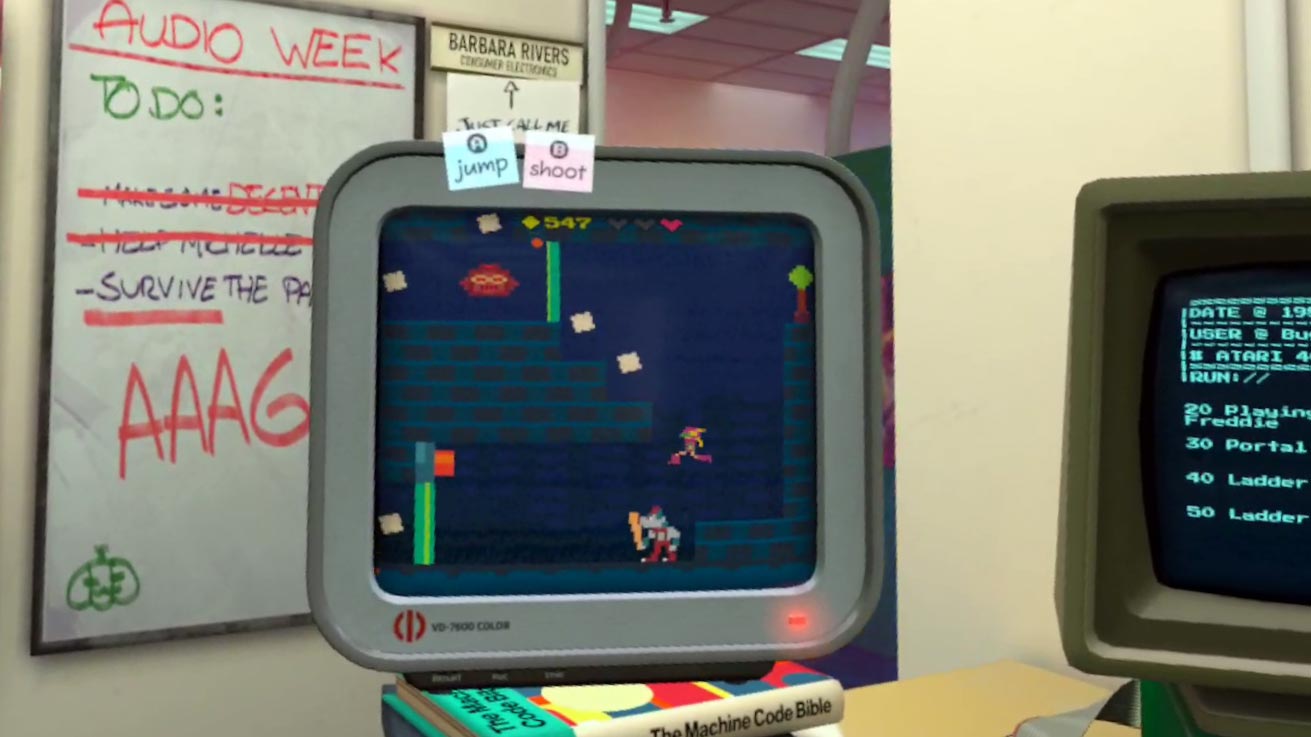
Having Atari as an actual publisher comes with a few new perks for the series. For the first time Pixel Ripped 1978 has done away with its ‘near-beer’ approach to game references, which relied on its own litigation-free versions of popular console games to complete the nostalgic feel. Granted, the name brands you jump into, both as Dot and the overworld character Bug, aren’t the most iconic Atari has on offer: Crystal Castles, Fast Freddie, and Yars’ Revenge. In the game, they’re called Bentely’s Quest, Groovin’ Freddie, and Grave Yar, although the characters are all there.
Still, you’ll find some easter eggs as well as mini-games related to the system’s best-known titles, such as Frogger, Breakout, and Space Invaders to name a few, making it a true love letter to the second generation of console gaming.
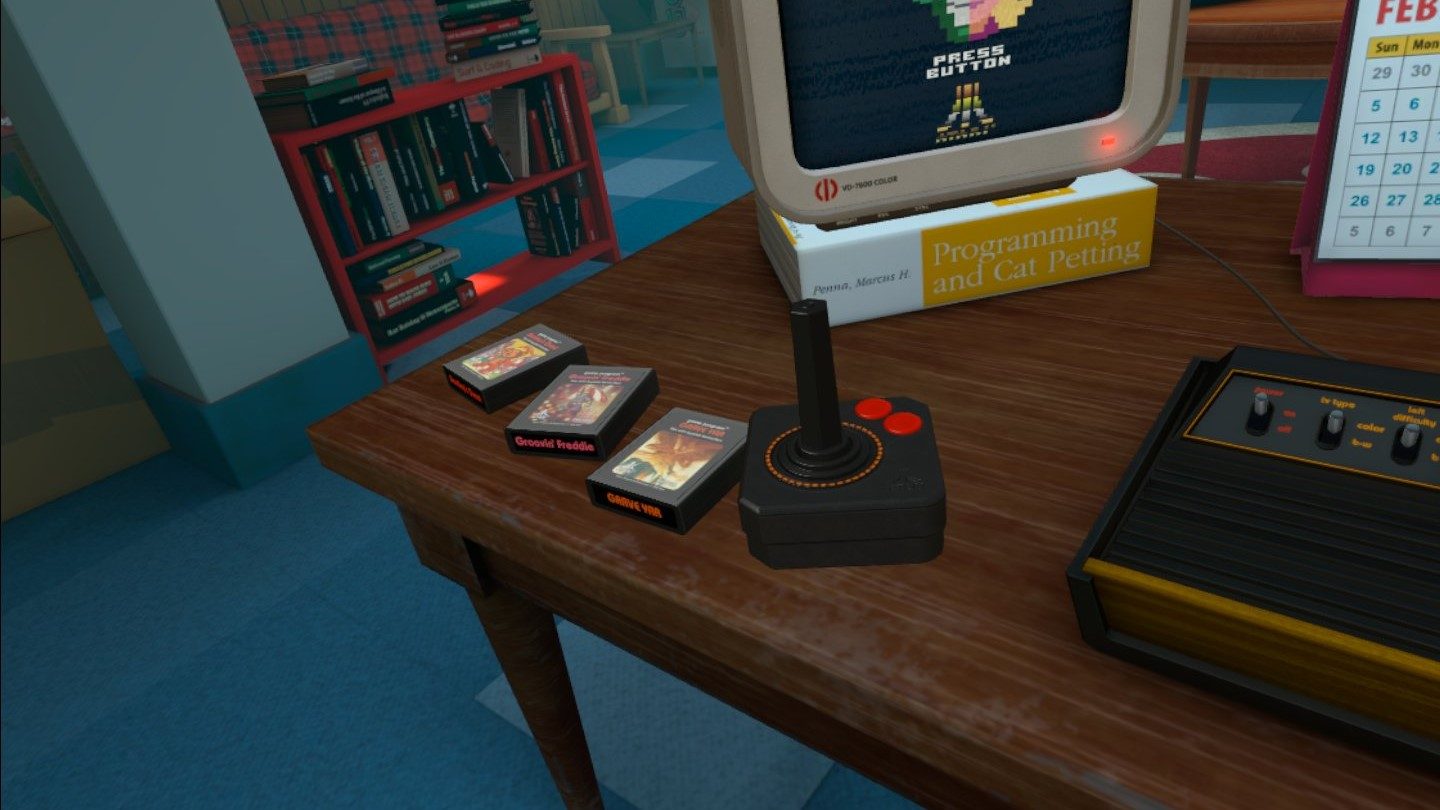
While late ’70s and early ’80s nostalgia is on full display—there’s an actual Atari 2600 console, game cartridges galore, and Atari 400 home computer—thankfully you won’t just be limited to the system’s eight-drectional joystick and single button when playing on your office CRT. As the game progresses, you’re handed more buttons which give those games significantly more depth and modern playability when played in 2D.
When playing inside the game, which is more consistently focused on first-person RPG gameplay, you’re again treated to a bright and blocky world that puts you head-first in reimagined 3D versions of each title, albeit infected by Cyblin Lord’s disruptive rips in space. The objective of each cartridge is to collect a crystal that will close each rip, leading you to an end-stage boss encounter.
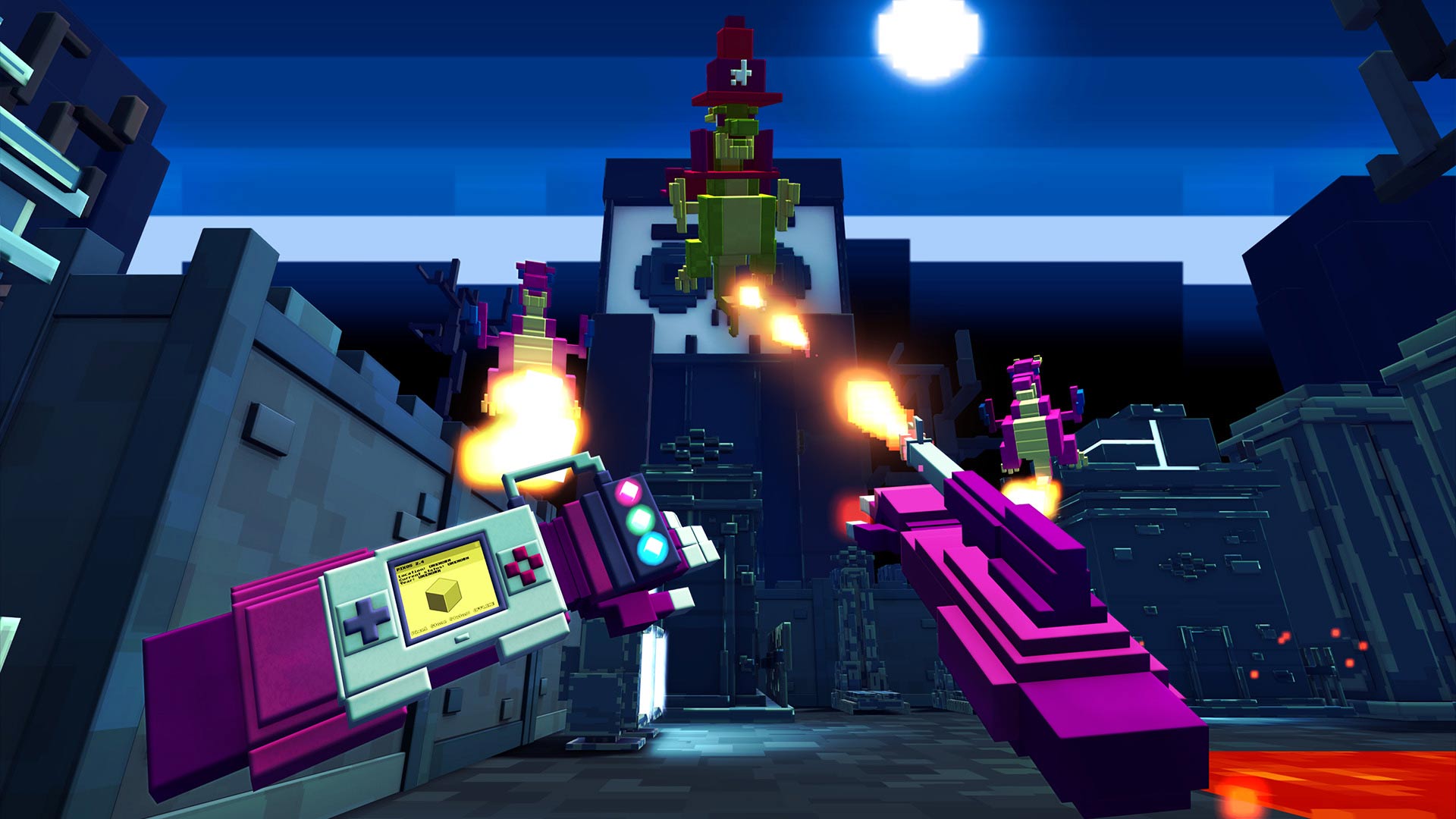
The RPG part of the game equips you with a few things: on the left hand is a wrist-worn device that can shoot out bug repairs, making up the bulk of the game’s casual puzzle-solving. On the right is a blaster which… blasts. And over your right shoulder is a random melee weapon, which is more comical than effective, offering stuff like an oversized tennis racket, a fish, or large ‘chancla’ slipper.
On first blush some things seem to be clear detractors in these first-person bits of the game, including repetitive shooting and melee combat, and some fairly lackluster upgrades. Enemy variation is also fairly low, offering up a pretty middling handful of flying and ground types, all of which feel like bullet sponges with their own unseen health bars.
Still, the game’s rhythmic drips of novelty do a lot to smooth over some of these momentary rough patches. Since there’s always something new around the corner and unique boss battle ahead of you, you might even think of those parts less as flaws and more like the sort of gameplay bottlenecks that were part and parcel of an era of gaming that was simplistic by necessity. Granted, Pixel Ripped 1978 is significantly more complex, but maybe it should be forgiven somewhat given the neurons it’s attempting to spark.
Immersion
Pixel Ripped 1978’s focus on first-person RPGs stuff gives a new latitude to move around and explore the world than previous titles, which were nearly entirely seated. Here, level design feels mostly logical and consistent, although at times I was left scratching my head as what to do next, which led to some unintentional backtracking through levels. Upon death, all enemies reset, which is basically on-brand for any classic game out there. Thankfully the game autosaves, which is a merciful break in immersion from the titles of the early ’80s.
While Pixel Ripped 1978’s first-person RPG focus isn’t the homerun I was hoping for, its higher fidelity connection to the nostalgia certain ups the overall immersion factor. There’s something about seeing a real Atari 2600, handling the cartridges, and hitting play on a small CRT that just clicks a few neurons in my brain way more than a ‘Game Girl’ or ‘Turbo Drive’ playing ‘Rad Racoon’ ever could.
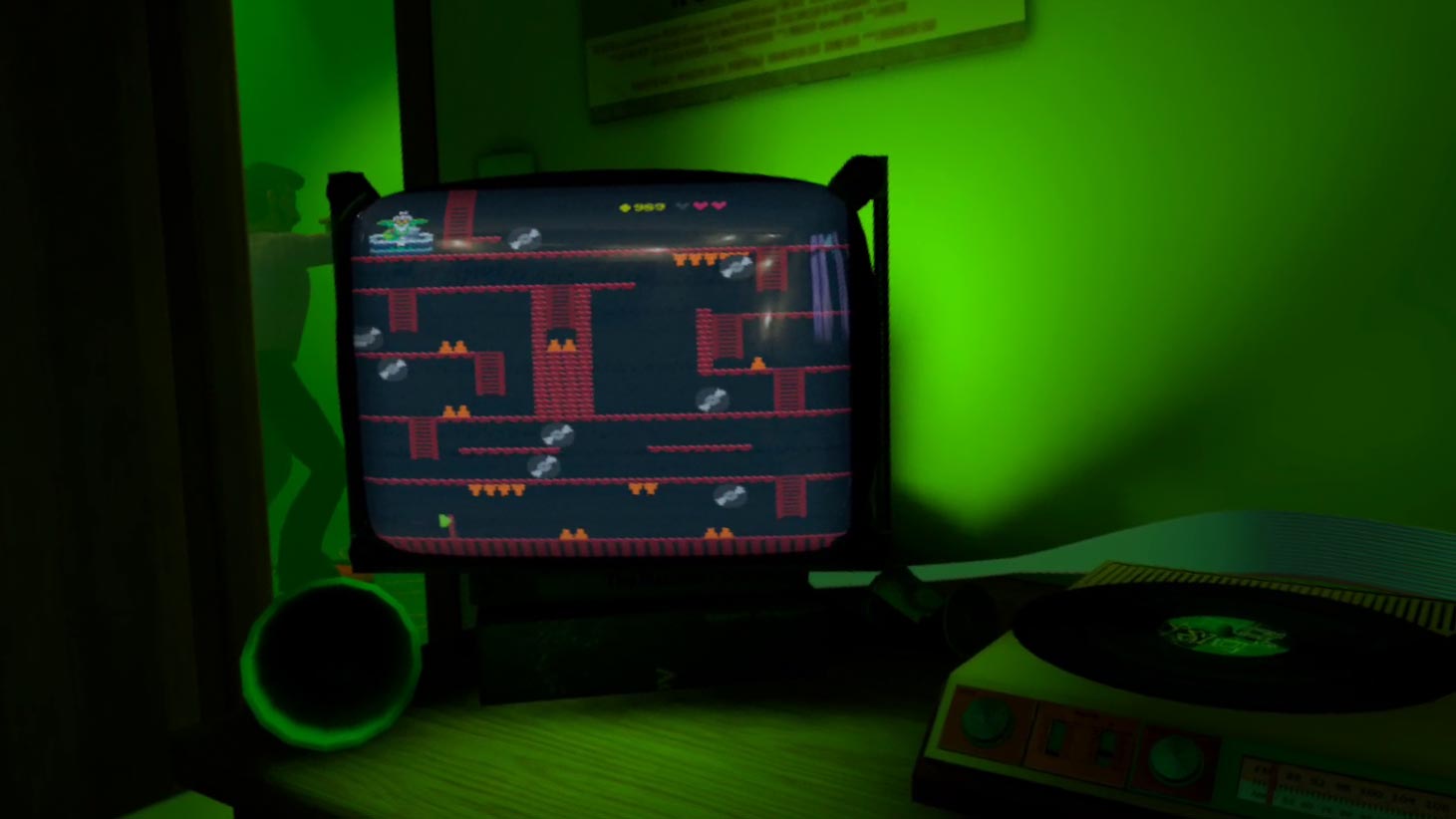
Characters inside the 3D-ified Atari games are suitably blocky and colorful, while the art style in the overworld feels decidedly more Pixar-ish than previous titles. Character design and voice acting is effective here, although some of the mouth movements seem to be a little less refined than they ought to. Object interaction is also something that feels like could need more refinement, as found items only have a single attach point which can make selecting through multiple items a more difficult task than it should be.
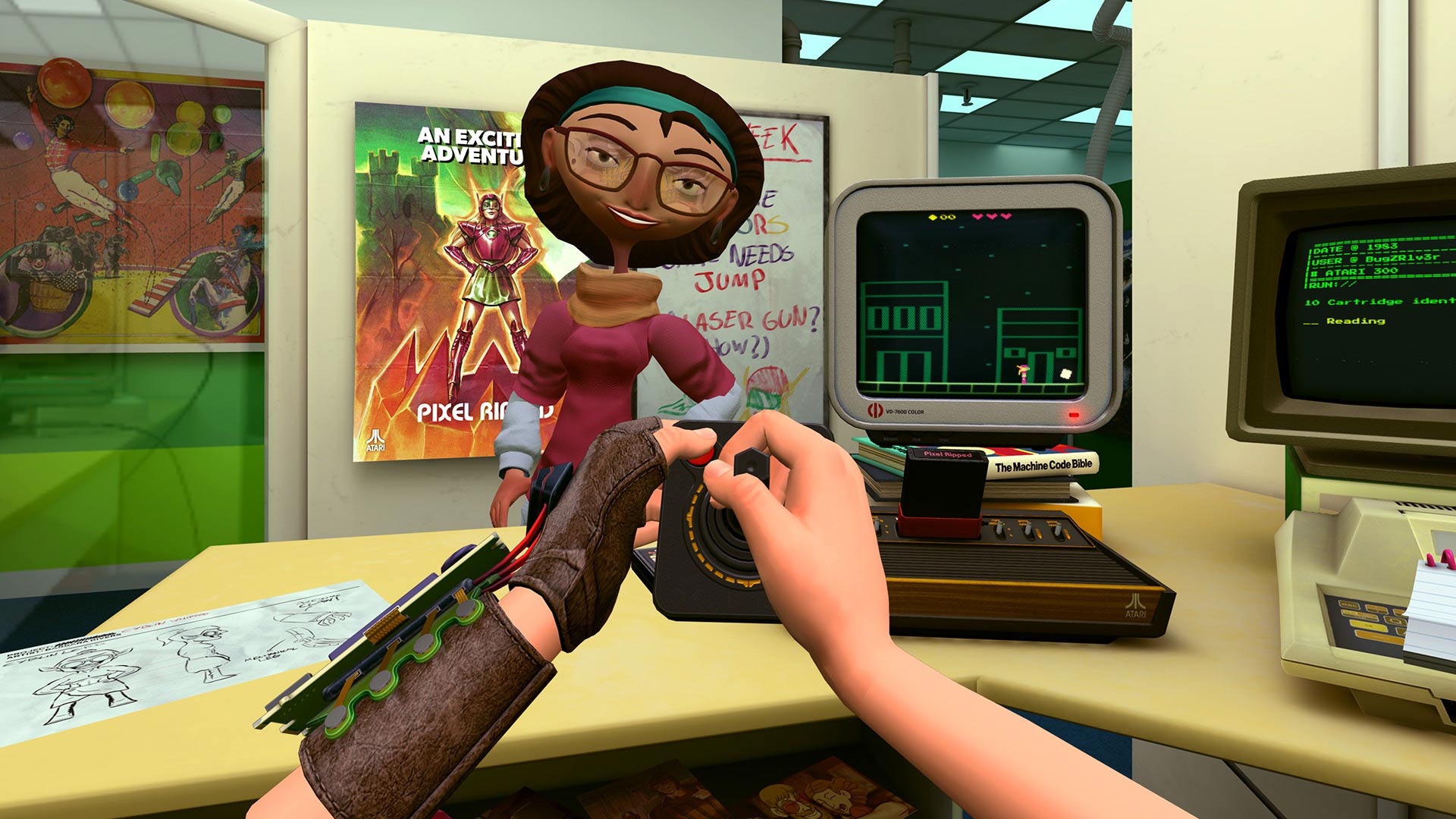
Overall, Pixel Ripped 1978 is a little rough around the edges when it comes to physical immersion, although it’s difficult to be too wrapped up in its sore spots when it’s so charming and heartfelt. It doesn’t feel like the result of a developer who’s just going through the motions and trying to pump video game references in your face for the sake of hitting some sort of nostalgia quota; Arvore’s love for classic gaming definitely shines through.
Comfort
Dot’s helmet HUD does a lot to help mitigate some of the woes of free locomotion, so you can glide in all directions with minimal discomfort. There’s also teleportation and variable snap-turn available, which should keep basically everyone comfortable. The entire game is played on a single plane, so there isn’t any first-person platforming to speak of or vehicles that might cause user discomfort. Notably, like its other titles the studio designed Pixel Ripped 1978 to be played seated. Check out the full comfort checklist below:
‘Pixel Ripped 1978’ Comfort Settings – June 14th, 2023 |
|
Turning |
|
| Artificial turning | |
| Snap-turn | ✔ |
| Quick-turn | ✖ |
| Smooth-turn | ✖ |
Movement |
|
| Artificial movement | |
| Teleport-move | ✔ |
| Dash-move | ✖ |
| Smooth-move | ✔ |
| Blinders | ✔ |
| Head-based | ✔ |
| Controller-based | ✖ |
| Swappable movement hand | ✖ |
Posture |
|
| Standing mode | ✖ |
| Seated mode | ✔ |
| Artificial crouch | ✖ |
| Real crouch | ✖ |
Accessibility |
|
| Subtitles | ✔ |
| Languages | English |
| Dialogue audio | ✔ |
| Languages | English |
| Adjustable difficulty | ✖ |
| Two hands required | ✔ |
| Real crouch required | ✖ |
| Hearing required | ✖ |
| Adjustable player height | ✖ |
Full disclosure: The game features a number of voice-over cameos from people in the XR industry, most of which are found in a ringing telephone back at Bug’s office. I was offered a small, unpaid cameo here as well.